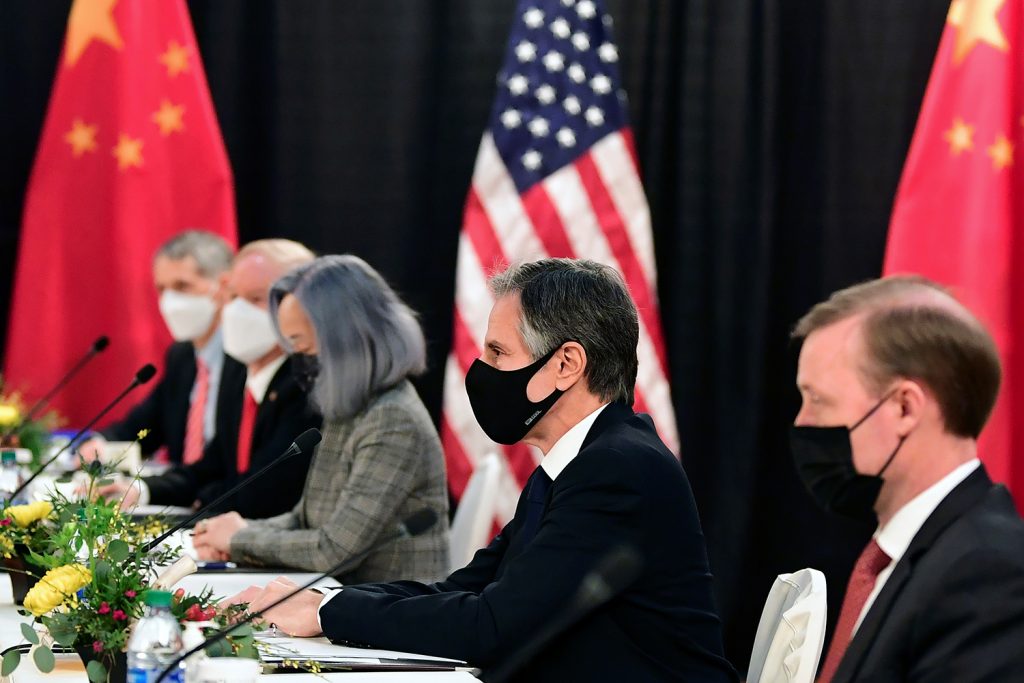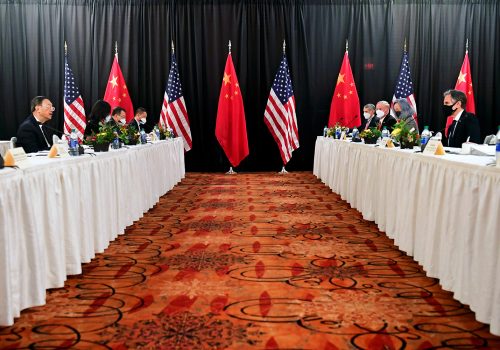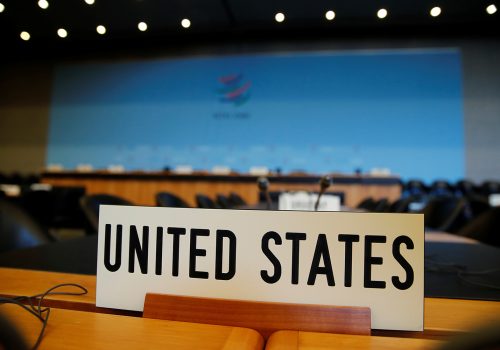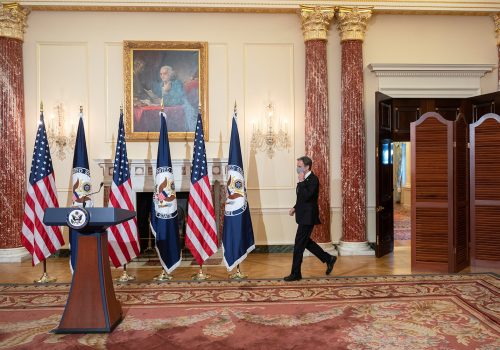The high-level US-China meeting in Anchorage last week—amplified by a blunt exchange of accusations at the beginning of the meeting—was well choreographed by both sides to articulate their grievances against each other, draw red lines on their core interests, and demand changes in each other’s behavior. It was also the first opportunity in the Biden presidency for the two countries to explore the possibility of cooperating on areas of common interests such as countering climate change and the pandemic. Despite the drama, reported comments by the participants suggest that both sides do want to keep talking and find concrete opportunities to collaborate.
But on balance, the meeting appears to confirm that the United States and China are locked in a new form of cold war—where conflicts over different national values and core interests are prominent and competition is fierce across a wide range of issues, while cooperation is still possible in a few specific cases.
Immediately after the meeting in Alaska, both sides have moved to consolidate their respective alliances in this strategic competition. US Secretary of State Antony Blinken will participate in a meeting of NATO foreign ministers this week in Brussels—against the backdrop of the first EU sanctions on China’s officials since the Tiananmen Square massacre in 1989, coordinated with sanctions by the United States, the United Kingdom, and Canada over the Chinese government’s human-rights abuses against the Uighur Muslim minority. The White House is also scheduled to welcome Japan’s Prime Minister Yoshihide Suga on April 9 as the first visiting head of government of an allied country. China, meanwhile, is hosting Russian Foreign Minister Sergey Lavrov to strengthen the two countries’ cooperation against their common adversary, the United States. Beijing has also retaliated by imposing sanctions on select European officials and entities.
There are three main takeaways from the remarkable events of the past week:
- Settle in for a prolonged struggle: If the purpose of the Anchorage meeting was to enable the two sides to articulate their strategic differences, red lines, and demands in order to avoid any misunderstanding, then the meeting succeeded. By the same token, however, their interests and demands are so diametrically opposed to each other and so publicly expressed that the prospects of the two sides reaching any compromise or reconciliation seem quite remote at this juncture. What’s more likely is a protracted struggle over these differences, filled with tension and risks of escalating conflicts including regional armed skirmishes in the East and South China Seas or worse. This clearly characterizes the situation as a modern version of cold war and should probably put an end to the debate about whether or not such a label is appropriate. The paramount challenge in this period is to manage the new cold war to prevent it from turning into a hot one, an effort in which both sides have a shared interest.
- Competition will eclipse cooperation: The conflicts over their sharp differences in national values and core interests, as well as the distrust prominently displayed in Anchorage, will dominate and color other aspects of the relationship between China and the United States. They will compete across the economic, trade, technology, cybersecurity, military, and geopolitical domains. There is still room for cooperation in a few particular areas of common interest—dealing with climate change and the pandemic, and challenges arising from countries such as North Korea, Iran, and Myanmar. Forming a coordination group on climate change, in fact, was the only tangible deliverable that the two sides agreed to during their two-day meeting. Nevertheless, these possible opportunities for cooperation, even if realized, will be unlikely to change the basic nature of the strategic competition.
- The two sides are speaking as much to their own publics as to each other: The public, forceful presentation of national positions in Anchorage was also meant for domestic audiences in both countries. In part to deflect Republican criticisms that it is soft on China, the Biden administration has sought to demonstrate that it is more effective than the Trump administration was in dealing with Beijing—largely by building up its alliances. If Biden’s evolving policy on China—which is still under review—is widely recognized as sufficiently tough, that could afford the administration some room for maneuver to secure Chinese cooperation on certain issues. Watch for any mutually agreed steps to mitigate the effects of climate change ahead of the COP26 conference in November in Glasgow, roll out the COVAX program for distributing vaccines around the world, diplomatically reengage with North Korea and Iran, and address the military coup in Myanmar, which China and other members of the United Nations Security Council demanded be reversed in a recent statement.
Ultimately, the outcome of the emerging strategic competition between the United States and China will be decided at home. It will depend on the success of domestic efforts in both countries to develop sustainable and inclusive economic growth, promote full employment by training workers for jobs of the future, and improve social cohesion by addressing various forms of inequality. If this materializes, it would be a positive outcome of this competition. But the risks of a negative outcome, involving escalating conflicts that threaten global peace and stability, are uncomfortably high.
Hung Tran is a nonresident senior fellow at the Atlantic Council’s GeoEconomics Center, former executive managing director at the Institute of International Finance, and former deputy director at the International Monetary Fund.
Further reading
Image: The US delegation led by Secretary of State Antony Blinken (C) and flanked by National Security Advisor Jake Sullivan (R), face their Chinese counterparts at the opening session of U.S.-China talks at the Captain Cook Hotel in Anchorage, Alaska on March 18, 2021. Frederic J. Brown/Pool via REUTERS



